By early December there was not much snow, and by the end of the December there was not any snow. I took a long walk on a day between then and now. A walk in the far north in winter happens in layers. I wear long johns, a flannel shirt and wool pants, a wool sweater and a jacket that will stand-up to the wind and snow. On my feet are thick wool socks and boots with heavy spikes strapped around them for stability on the ice. I also wear a scarf and a hat. A scarf is for every season. It can function as a towel, a bandage, a rope, a blanket, or visor. I also carry a small backpack. In the backpack is a change of socks, a pair of gloves, an extra-warm jacket, and a thermos filled with either hot coffee or tea. I require coffee, but I prefer tea in the field. Tea tends to hold-up better. It doesn’t get as bitter as coffee. I also carry a camera, a notebook, a couple of pens, and a thin book or two, which lately has been poetry. I could haul Swann’s Way into the woods, but I am not likely to read it. Czeslaw Milosz’s Provinces on the other hand fits neatly between the notebook and the jacket. Plus, I can sit with lines like these:
If only it all could last, but no way.
It iridesces, passes, turns inside a soap-bubble
Together with an invocation Celestials address to the mortals:
“’Oh, dizzy tribe, how not to look at you with pity!’”
Eventually, the pack is packed, the clothes are donned, the heart and body are braced for the weather, and out the door I go.
Leaving the house, I checked the sky. In the winter months, I look for sea eagles. If there are sea eagles circling the woods or the sea, then the cat must stay indoors. If there are no sea eagles, then the cat—in the case of our cat, a half-Ragdoll, half-Maine Coon creature named Ana—can take her chances in the relative wild. The cold and snow are usually enough to drive her back indoors. Which is a relief. I don’t worry much about Ana, but I damn sure don’t want to be the person who opens the door to her death. I like the cat. Her name is short for Louisiana because she likes jazz. Imagine a fire lit woodstove, Freddie Hubbard blowing “But Beautiful” on the radio, and a black & grey cat creature meat-loafing on a red Afghan rug, with her tufted ears flexing now and then at the high notes. The eagle gods can wait.
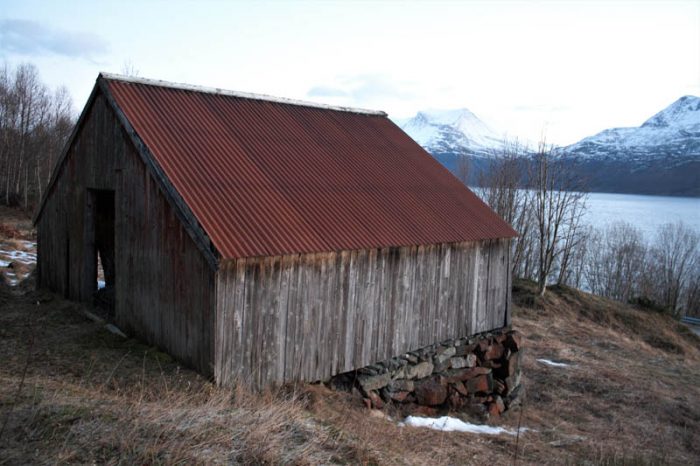
Across the road from my house is a barn no one uses anymore. I’m not sure when the barn was built. The foundation is mainly dry stone, and inside, there are lovely gaps between the wooden slats that make up the walls. I look inside the barn each time I go near it, though nothing is ever there but sheep stalls. I pause at the door in case the quiet wants to tell me anything. On this day the quiet reminded me of a rickety shed I stumbled upon in woods about a three-hour drive from my house. I looked into one of the windows of the shed and saw a child’s tea set arranged on a miniature table. When I entered the building, I noticed the dry tree leaves stuffed inside the cups and tiny spider webs woven inside the handles. There was a knife on the counter, too, and it was a beautiful knife. It had a polished birch handle, and the blade was still sharp and sturdy. When I left, I was careful about where I placed my feet. Some places are meant to be left in silence.
Walking east of the barn, I followed a stone wall. I had an idea the wall would peter out after a few meters, the way most of them do in our area. Near the barn, the dry stone passes in front of an outcropping of grey shale. The outcropping rises maybe 10 meters from the ground, and at its base is a shallow alcove. At the back of the alcove is a narrow crevice. It was here two years ago that my son found a glass jar hidden between the rocks. The jar lay hidden as far back into the alcove as my son’s long arm could reach, and inside the jar were rifle shells stamped with the year 1918. The shells were badly corroded. It is likely they were stashed here during War World II. Whether they belonged to the Germans or Norwegians is unclear.
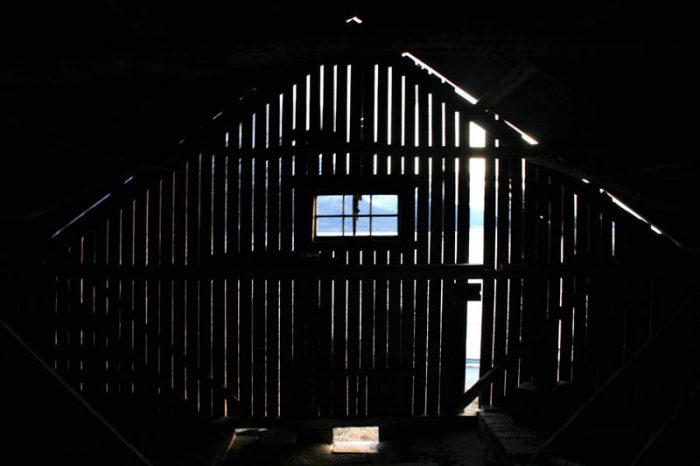
I am not confident how these walls were once used. I don’t know if they marked property boundaries, established paths, or controlled livestock. The reasonable answer is a combination of all three. But these stone walls are ruins now. No one, as far as I am aware, tries to maintain them, which is unlike the dry stone I have seen in northern England, Ireland, and elsewhere. I suppose because sections of the wall have fallen down, often blending with the ground, disappearing and sometimes reappearing, it is easy to endow them with the weight of ruin. From ruin, we can conjure lore—of a chieftain lured into the mountains by dwarves and his insatiable desire for gold, of a man who surrendered himself to a near goddess whose beauty was more intoxicating than dreams, of a girl who offered bread to a strangely disfigured creature and was then shown a field of the most delicious berries, of a farmer who worked for the Resistance and hid beneath the snow from German troops.
Lore, as most of us understand the word, is a term describing a tale or tradition passed down in various cultures and communities. The word conjures up images of dark forest and myr and glades along secluded streams and the curious folk, real or imagined, who live in such places. I think of feud stories I’ve heard and sideroads where travelers have vanished and swamp lights and reasons why not to chance the woods at night. These kinds of stories can lift their sleepy heads on our walks. And etymologically, the word lore is associated with teaching and doctrine. It is hypothesized, too, at its deepest roots the word echoes the Proto-Indo-European word lois, a word suggesting “furrow” or “track,” as etymoline.com explains. Although this is a word search for which I wish (again) to have an O.E.D., I will trust the source. If for no other reason than the possibilities of connections are too bewitching to ignore. I also accept that truth and fiction sometimes merge into unexpected revelation.
Before going on, I set one of the fallen stones back into the wall. I am not sure why I do this. Maybe the practice is something of an acknowledgement of the folks who did this work decades ago, folks who made a way to go and a way to rest.
But I didn’t go far. I walked another couple of minutes uphill before the wall disappeared. Looking down the slope, I saw where some of the old wall had fallen and laid scattered among other stones. A local had mentioned to me that there were paths in and between the villages here, and some of those paths followed the dry stone. These paths ran close to other houses and farms. The reason for this is because neighbors wanted dependable access to each other or for what they may have needed—a chat, a beer, flour, sugar, eggs, a sigd, a hakke or a skufle (spade in the local dialect). These were agricultural people. Their lives, which is to say their capacity to stay alive, were joined in blood with the land and sea. Still they needed neighbors. I have been told that people who lived here a generation or two ago were friendlier, more willing to invite others into their homes. As I have said to folks who have asked me about the COVID situation where I live, social distancing is a way of life here. Given this, it can be difficult to conceptualize warmth between neighbors. In spite of this, I am often invited into homes. We drink strong coffee, we eat waffles, we talk about the War, we talk about the U.S. and Texas. We find, in short, common ground, and common ground can take curious shape. Such was the night I spent at a neighbor’s house over the summer, a night of drinking beer, talking about the War, the generosity of grandparents, and what sort of fish we could catch in the sea in front of my neighbor’s house. Those were the highlights. We ended the night in the morning with what must have been a very charming rendition of “You Were Always On my Mind.”
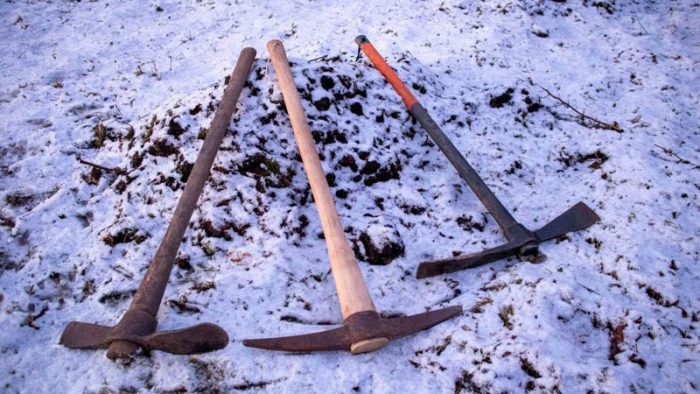
As my neighbor began to play his guitar, he shouted, “Here is one you will know!” At that moment, he struck, full sforzando, the opening chords of Willie Nelson’s “You Were Always on My Mind.” The music progressed, the tempo grew, and out came my neighbor’s voice in magnificent song, “Maybe I didn’t love you you….” In this haze of notes and enthusiasm, my neighbor shouted to me again, “Sing Texas! Sing!” And so I did…” all those lonely, lonely times….”
I left the neighbor’s house for home at 4 am under bright sun. The sea smelled fresh and clean, and I did not want this life to end.
I continued my way up the hill without a destination. The wall was gone, but l expected to pick it up again. I found a set of reindeer tracks and traced them through the snow. I began to fantasize about stalking a reindeer, which is silly. A reindeer is mostly a herd animal in these parts. Even so, I liked the idea of stalking a reindeer. This is the sort of moment in which I can pretend my life is more exotic than it really is. Here you are, I say to myself, in the far north, exploring the fjells, tracking reindeer, the mere glow of a sunless arctic winter is over your shoulder, the sea is behind you and mountains crown the hills. Somewhere there is a reindeer. All of which is true, but it’s not exactly like that. Rather, there is a trick of invisibility that lets us see, and occasionally I can work the trick with a story.
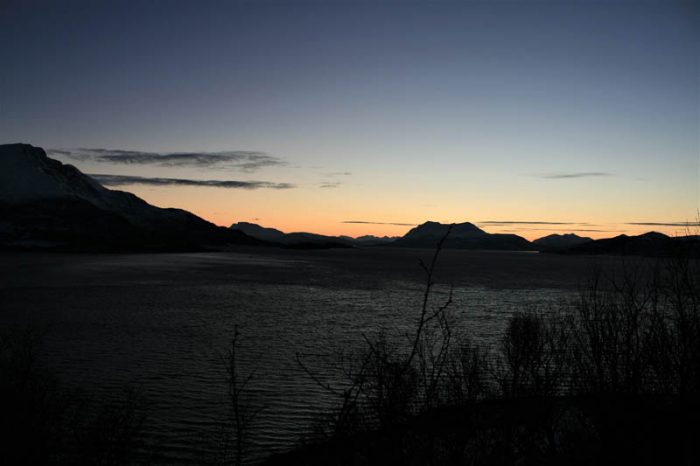
Near the top of the ridge, I went away from the reindeer tracks to find a spot to sit and drink tea. It is interesting to consider how far “far enough” is. The more Romantic of these considerations are questions of will I starve? Will I run out of water? Will I freeze to death? Each scenario is possible, though so unlikely I hardly give them a thought. That said, freezing to death does feel closer than dying of thirst or starving. The more realistic considerations of how far “far enough” is enough revolves through another set of questions, such as when will I need to start dinner? When will the boys get home? Who have I let down today and how do I fix it? The life of truth and beauty, after all, is a work of fragile progress.
Through my years of wandering, I have noticed that where to stop and where else to go often share the same address. The idea is to stop where the world and all its stones and stories and broken walls and neighbors have become real, have been affirmed in some way by their presence, and yet, there must also be the possibility of what might be, of what lies across the valley or around the bend or over the hill. This is a possibility we cannot name nor would we understand its name if it were given to us. And I stopped at the top of the ridge. I took off my backpack and got out my thermos and poured a cup of tea. I set the cup in the crook of a birch tree and then tucked my scarf into my coat and searched through my pack for the book I carried with me. For this trip, the book was the Selected Poems of Anna Akhmatova.
There is no-one to cry with, no-one to remember
With. And the shades slowly pass from us,
Those shades whom we no longer call upon
And whose return would be terrible to us.
And, once awake, we find we have forgotten
Even the road that led to the lonely house,
And, chocked with shame and anger, we run to it,
But everything (as in a dream) is different:
People, things, walls, and no-one knows us—we’re
Strangers.
Dearest Anna… All her life she harbored lovers and ghosts.
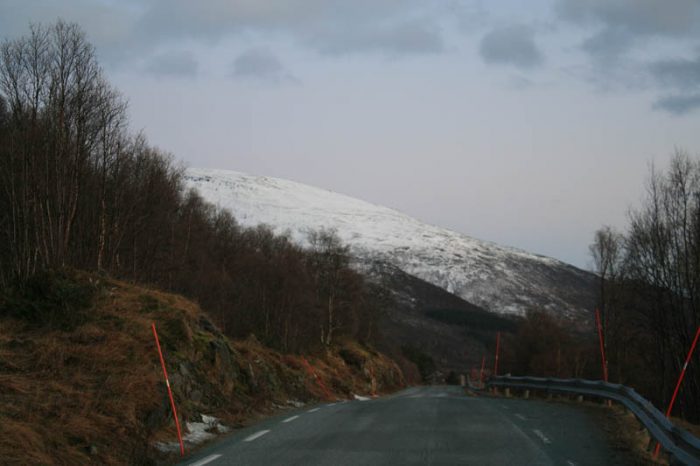
Dropping off the ridge, I chose a different way down and discovered another section of walls. I didn’t stop at them though. Instead, I followed mazy paths of what could have been animal trails or, more likely, sunken fissures of old snow and drifts. The twists and turns of the smaller paths dipped between trees and over tiny ledges, eventually leading me to the road. There were no cars, and I like the sight of an empty road.
I usually become quiet after these walks. The conversations with myself about what I have seen and remembered are, for a moment, silenced by the largeness of what is here—the sea, the mountains, the empty road, the late glow of an unseen sun. The details seem to come from some other earth, though of course they do not. There is only this earth. There are ruins enough to tell us this. Go quietly.
Damon Falke is a regular contributor to the Canyon Country Zephyr. He is the author of Now at the Certain Hour, By Way of Passing, and most recently The Scent of a Thousand Rains and the forthcoming film Koppmoll (2020), which explores memories of War World II and home. You can find out more about his work at: damonfalke.com, shechempress.org and on Facebook. And you can click HERE to read more of his work in the Zephyr.
To comment, scroll to the bottom of the page.
Zephyr Policy: REAL NAMES ONLY on Comments!
Don’t forget the Zephyr ads! All links are hot!


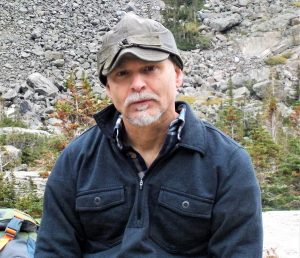

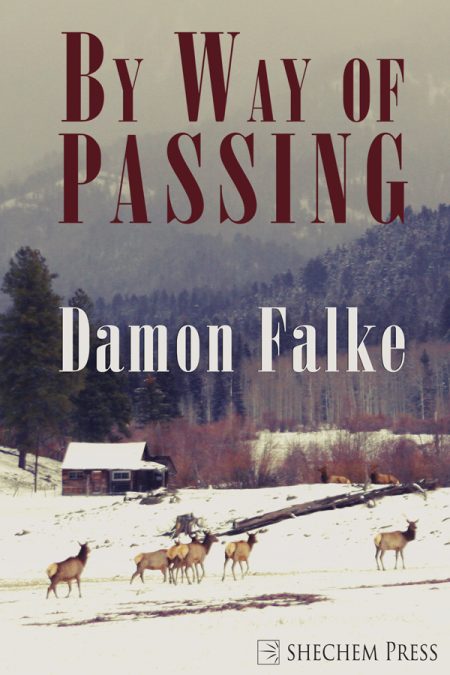


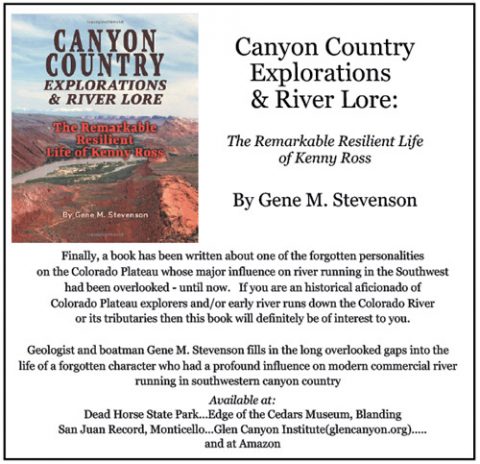

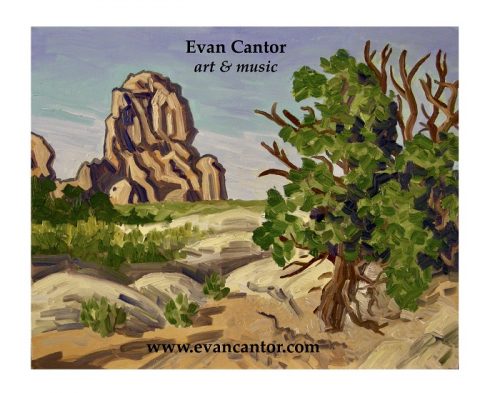
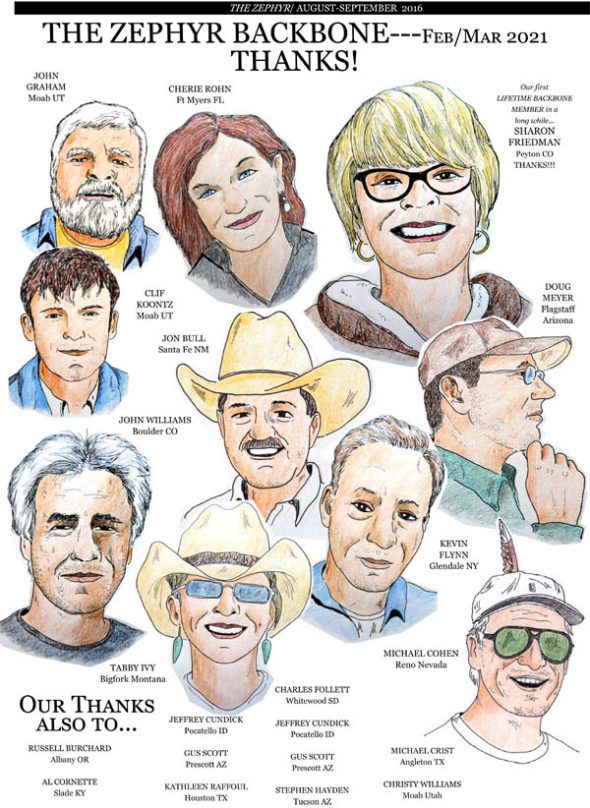
so lovely. reading damon’s story is like taking the walk with him. without the burden of a backpack and the cold. just his words to warm the soul.
Great article. Very descriptive and with the pictures, it is almost like the reader is there.
Winter gives a nice aesthetic for photos!